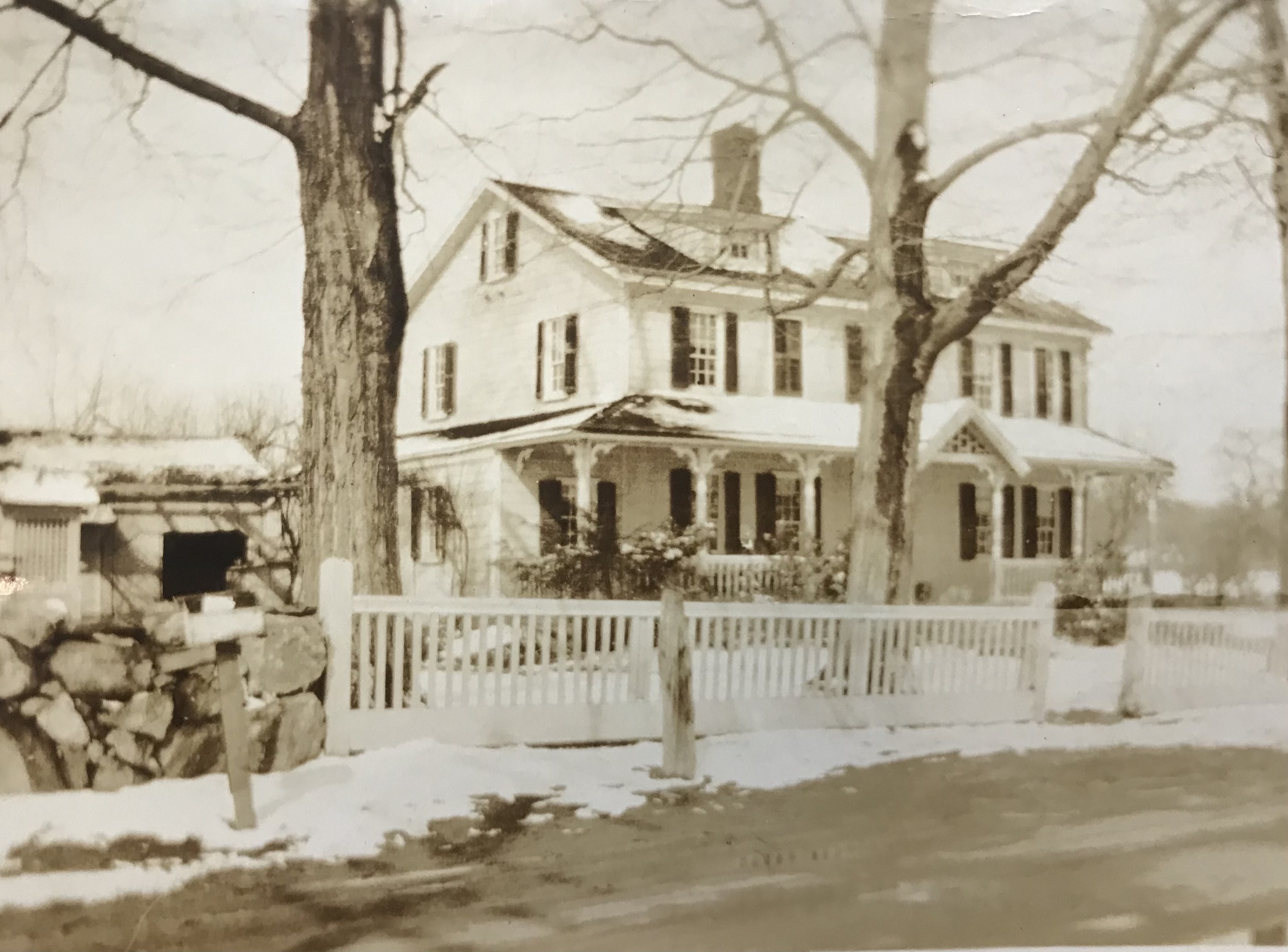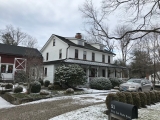Now & Then: 'White Oak Shade District' Home
Carey Weed, born in Stamford in 1782, settled on a farm in what was then called the White Oak Shade District.
He was a soldier in the War of 1812. With his second wife, Hannah Reed, he had a son, Andrew J. Weed, who was born August 19, 1819.
Like his father, Andrew was both a farmer and a shoemaker. Andrew married Betsey Banks, from Easton, and they lived and ran his father’s farm on White Oak Shade. Andrew and Betsey had five children – Clarissa, Mary, Henry, John, and Freddie, whom they raised in their house at #33 (listed today as #51).
According to tax records, the four-bedroom house has been owned by just four families since the bicentennial of 1976, when it was sold for $137,000. The town in 2003 issued permits to demolish a garage and reassemble a barn on the 1.07-acre property.
“New Canaan Now & Then” is presented in partnership with the New Canaan Museum & Historical Society.



Love this series!!!
The reassembled barn had been moved from the adjacent lot immediately south of the property (and the accompanying house on that lot was “burned down” in a NC fire dept training exercise). Likely, it was the Weed’s own barn. With the barn restored, the property would prospectively have “too much coverage” so some rundown outbuildings, one had been a chicken coop, were dismantled.
Not sure what would have been considered a “chicken coop”. I lived there from the very early ‘60’s to ‘76, which at the time was 6 White Oak Shade, and we, nor the adjacent house where the large barn came from had a chicken coop.
We purchased 51 White Oak Shade Road in 1996 from the Dailey’s who had purchased the house in 1976 from the McCoy’s. Shortly after moving in, Mr. McCoy stopped by and gave me several details about the house including how it used to be 6. I didn’t know that it had become 33 but I did know that it became 51. Curiously and probably on purpose, 3+3 = 6 and 5 + 1 = 6…
Interestedly Mr. McCoy shared with me that the front porch served as a site for a Folger’s coffee commercial.
The McCoy’s made some changes to the property, finishing the basement and I think adding the pool. The Dailey’s added a new garage and enclosed the north side of the wrap around porch to enlarge the living room.
My understanding is that the Weed Farm went all the way to the middle school. Most of the property was sold off leaving the original farm house, the dairy barn and a total of 5 acres. At some point the five acres were subdivided into 5 lots of one acre each leaving the original property on one acre and separating it from its dairy barn. The property had a small barn in the back right corner (should still be there), an outhouse and a small stable. Next door at 67 was built the home where Joyce Scarborough lived. She was an antiques dealer in town and she stored her antiques inventory in the barn. In about 2000, Arnold Karp bough the three remaining empty lots to develop into homes. It was becoming evident to me that Mrs. Scarborough’s home would soon be torn down. So I approached her about a plan to save the barn and move it about 50-60 feet to our property. She agreed and we hired a post and beam contractor named Jeff Andrews to take it apart beam by beam and peg by peg. It was then reconstructed on our property and attached to our house. It is essentially in tact as it always has been and made of very wide plank American Chestnut.
The basement of the barn which had housed the dairy cows became the garage. In order to satisfy New Canaan zoning requirements we tore down the modern garage and removed a small modern lean too addition to the stall which I believe was added by the McCoys.
Getting the variance was fraught with problems and helped serve to change zoning views about antique properties. The issue related to coverage. In NC coverage counts all out buildings, over hangs and wrap around porches etc. McMansions typically have no porches and no out buildings so they can maximize square footage. It’s nice to see that the most recent owners have continued to maintain the property. New Canaan needs to continue to make exceptions for antique properties so it can maintain the character of the town.